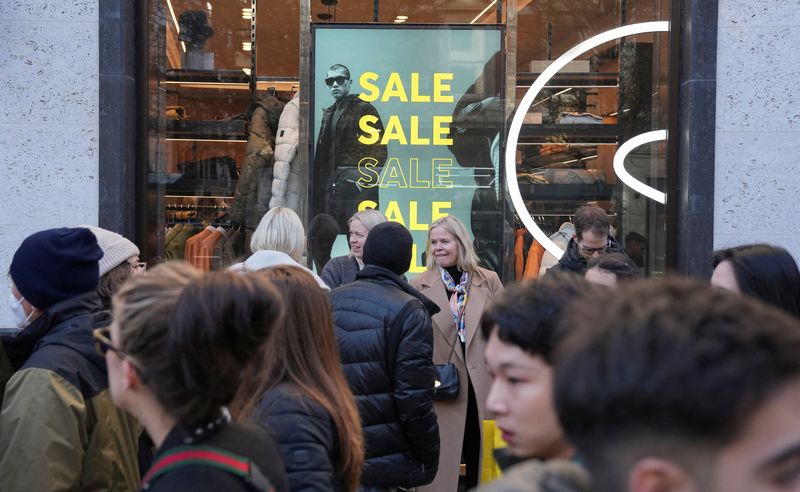LONDON (Reuters) - Shopper numbers across Britain in December rose 5.8% from November and were up 9.9% compared to 2021 despite the impact of the cost-of-living crisis and national rail strikes, research company Springboard said on Thursday.
It said the gap to pre-pandemic levels also narrowed, with December shopper numbers, or footfall, 10.9% below 2019 levels compared to a 11.4% gap in November.
Christmas updates published so far from discount supermarket Aldi UK and market researcher Kantar have shown non-discretionary spending held up in December, but Springboard warned 2023 could prove more challenging.
"It is indisputable that the strain on household budgets due to the cost-of-living crisis is likely to begin to tell in January, and that the first quarter of 2023 will be challenging for retail," Diane Wehrle, the researcher's marketing and insights director said.
Despite signs that British inflation may have peaked it is still running at double digits and consumers face tighter budgets this year with higher taxes and mortgage rates and scaled back government support on household energy bills.
Springboard noted that December shopper numbers in high streets were 12.7% higher than in 2021, when footfall was dented by the Omicron variant of COVID-19.
It said footfall was 10.3% higher in shopping centres and 3.6% higher in retail parks.

Springboard said that in response to the rail strikes, consumers shifted some of their trips away from high streets to shopping centres and retail parks that are more accessible by car.
It also noted that part of the attraction of physical retail for consumers will have been heightened by concerns around deliveries due to strikes by Royal Mail (LON:IDSI) workers, which became more significant as the month progressed.